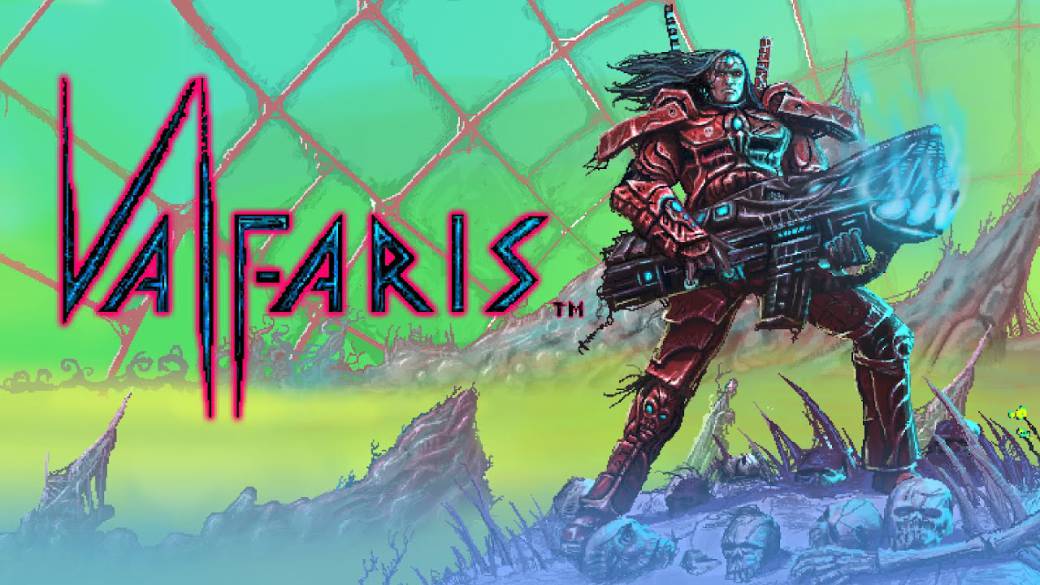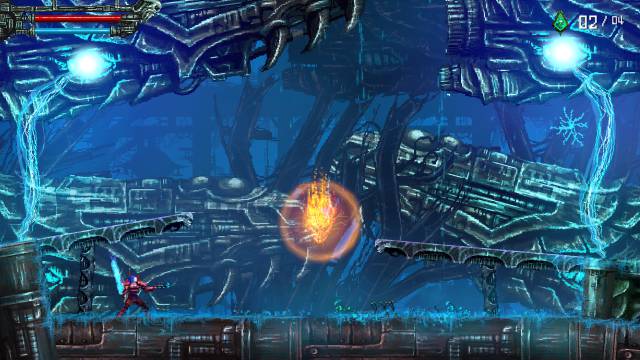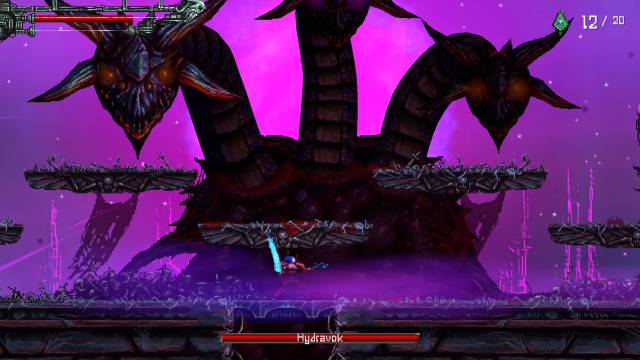
The second game of Steel Mantis manages to forget its first release with a proposal that works in all its facets
From what we see as soon as Valfaris begins, the bluish effect of the flames that leave the engine of a spaceship stands out much more … than all the nonsense that his characters tell. The truth is that it comes to be grateful, and is consistent with what the Steel Mantis study intends since its launch. The artistic style that the two games of this team share is one of the best news that has been seen on the scene indie lately, but the truth is that they needed to confirm their good audiovisual work with a video game equally convincing to the controls. We made it clear from the beginning: Valfaris is right where Slain! It went wrong starting, ballasting all the good work of this American team.
A Run'n Gun with hidden news
At first glance, nobody has ever hidden that Valfaris is inspired by the Contra saga, which has received both official deliveries as well as tributes these months, thanks to the remarkable Blazing Chrome. It is not a bad time for the traditional Run 'n Gun, but none of the last exponents (not even the most original Mechstermination Force) had so thoroughly considered the traditions of the genre to make them evolve in a subtle but determined way, without even reaching Change anything substantial along the way. That is why we are so surprised to see that this is exactly what Valfaris achieves, a perfect amalgam of trends that ends up convincing. It is a typical side-scrolling arcade, but this time it is not only played with the typical machine guns and other long-distance weapons, but also forces us to use swords that end up having similar influence in the game. From these attacks at close range, an idea is exploited until its final consequences: it is essential to hit the enemies to reload the secondary weapons, a feature that is used in the design of all phases and – above all – bosses. The result? an explosive balance between shots, secondary weapons and recharge of the latter with which the party begins on the planet Valfaris.
Let's not fool ourselves. All of the above does not mean that the game deviates completely from the Run’n Gun formula. The action never ends up deviating from what it seems, but it manages to integrate the shots of a lifetime with the obligation to approach the enemies (even if they are riddling us along the way) to hit them closely and absorb their energy vital, which we will then project or use to protect and counterattack. These kickbacks, which can clear the screen immediately, are further enhanced by weapons with sufficiently different characteristics to adapt to the preferences of each player. It is not a game in which we are going to make opposite builds of each other, nor has it been intended at any time, but Valfaris encourages us to try weapons combinations for the different situations with which we are going to run into the levels. A few phases that constitute the best possible news for this particular game, if we remember the mistakes of this study with its first title.
A succession of small recreational.

It is true that Slain! It did not work when it was released and it was a failed launch. It is no less, we think, that even when he returned from hell it was still a game with a rather discreet phase design, in a genre that unfortunately requires excellence in this section at this stage of the game. Well, it seems that Steel Mantis has learned from his mistakes this time. Like checking that the levels of Valfaris, structured around checkpoints that are the most important element of the whole game, this time scratch to a very high level. Whoever has been playing arcade games for years will immediately recognize not a few situations that he has already experienced: worms that have to be grabbed, elevators that are filled with waves of enemies, sectors in which we ride on massive robots and other sections of pure lateral advancement they are again recurring moments within a quite remarkable variety, but the title ends up enjoying a somewhat different sense of unity (at the same time as original) for another idea that has been implemented with a success masterful: the progression system.
Risk, Punishment and Reward
Anyone who played with Shovel Knight will remember that the control points ended up becoming a kind of secondary and voluntary challenges, since we could destroy them to obtain greater reward at the end of each phase and complicate things to our liking. The idea of Valfaris goes one step further: throughout the campaign we find some idols with which we can activate control points or, but we can also keep them to improve our attack and energy bar. The more idols we have in our power, the more powerful we will become, being able to also change these same relics for materials to improve the weaponry if we feel that some of them are left over.

The consequences that this decision has on how to face the game are incalculable and directly impact on its replayability: it is possible to activate all the control points (and we will hardly improve anything), but also to ignore even the checkpoints behind the bosses end, with what we will reach the end being authentic killing machines. On paper it does not seem like a revolution, but it has seemed a step forward very well thought out for the genre because of how well it has been carried out. This is the true playable proposal, although we could put some drawbacks to the location of some of the idols (especially those that are hidden) and control points. Also to the randomness with which items are falling, with moments of a rather excessive drought.
With its challenging but fair difficulty and its successful risk and reward system, Valfaris is one of the surprises of the independent scene of these last months in the two-dimensional slope. It is an audio-visual impeccable video game, with moments of virtuosity at the graphic level thanks to a very colorful artistic style that needed things to go well at once. Although it is a title that feels classic, it does not mimic any machine of the past in particular, but it leaves the screen based on details very elaborate in its graphics and a soundtrack that fuses purely arcade melodies with a heavy metal sound that It comes like a glove.

Very demanding from the beginning, it is a game that the typical virtuoso in the genre could complete in forty minutes, but in which a less skilled player will require a good handful of hours little by little that he will be attracted to some of the intensity peaks that populate the campaign, some of which we found somewhat exaggerated even when we understand their mechanics. We take what it takes to complete it, the truth is that there are enough new developments with which Valfaris has finally convinced us: with this fusion of modernity and tradition, we think that not even the most recalcitrant retro player will end this game by missing canons like the one of the three lives of always. A real achievement for a Run’n Gun than before, with many more surprises than it seems.
CONCLUSION
Valfaris is loaded with direct fun, variety of levels, frankly spectacular two-dimensional graphics and a game system that rewards the risk, understood as the pure memorization of levels to overcome them perfectly. Much good to do for a game that can only be attributed to a certain shortage of content, although the New Game Plus mode that has been added recently will have entertaining for hours to those looking for strong emotions. We would dare to say that we are facing the best Run’n Gun of this year, but also before an arcade that integrates very well aspects that, without being new at all, have been internalized as never before in such a classic game
THE BEST
- Very visually colorful, with a lot of artistic personality
- The variety of levels
- The risk and reward system with checkpoints
- Return bullets, block with shields, parrys …
WORST
- Some more content would have done well, although the new New Game Plus mode balances things
- Some idols and control points are located in somewhat debatable points
- The drop in items is excessively random and rarely
